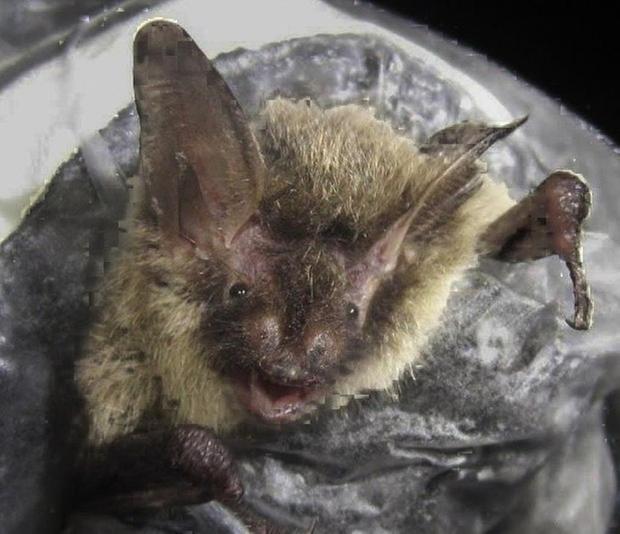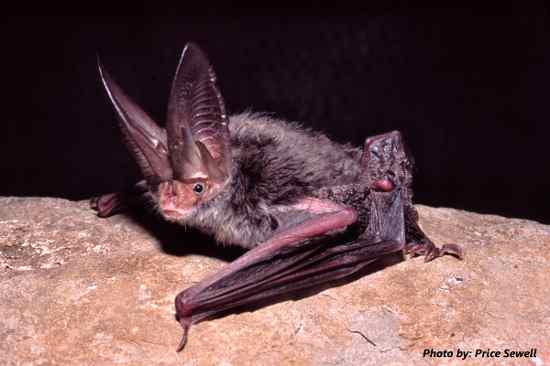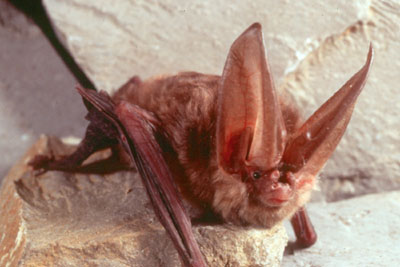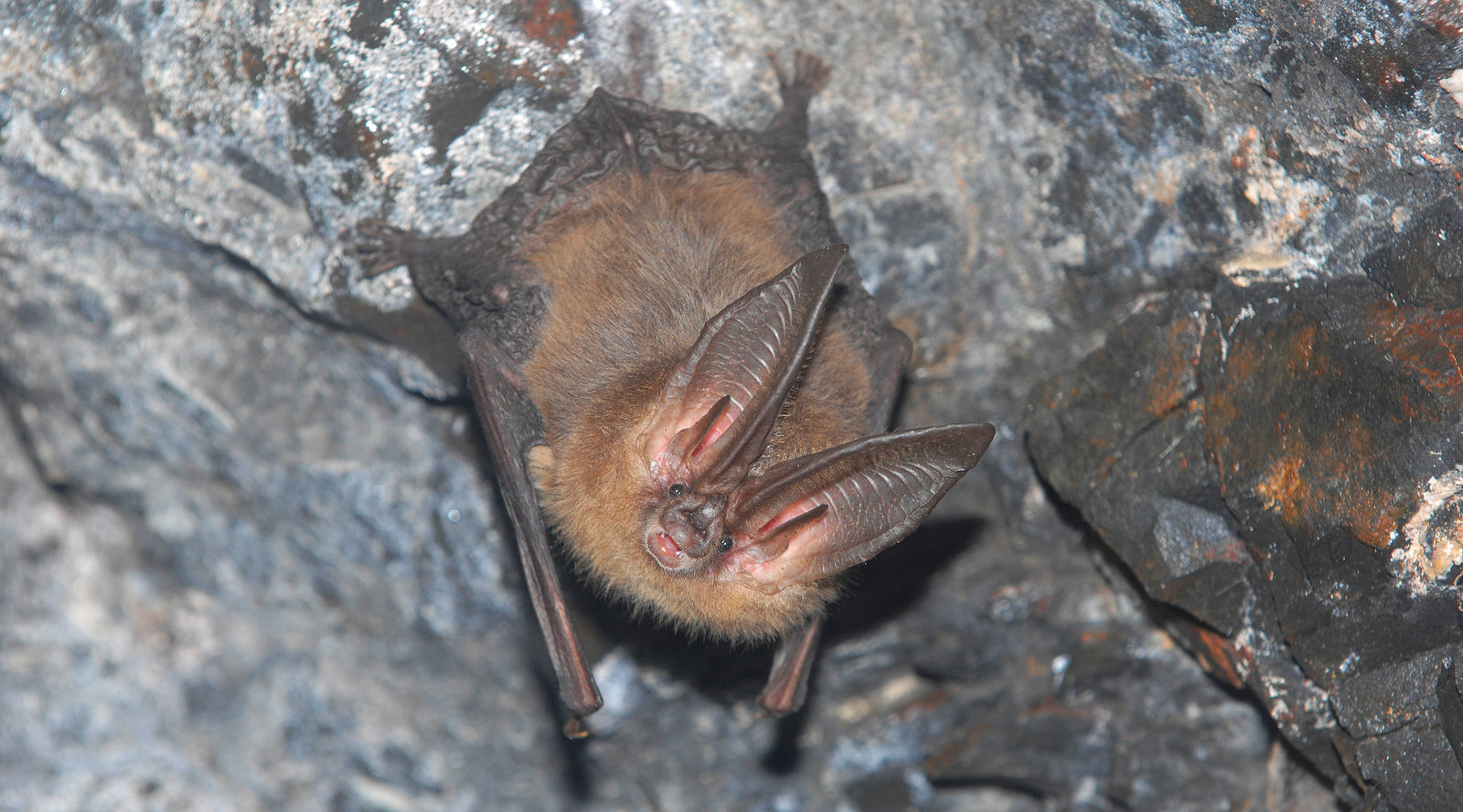Although it can be argued that all bats have big ears relative to their body size, there are a few bat species that really set the bar high. Here in Virginia, three big-eared bat species in particular are native to the region, and with great luck, spotted out in nature from time to time. What are these bats? Why are they special? Great questions!
Continue reading to learn some interesting and important facts about the Northern Long-Eared Bat, Rafinesque’s Big-Eared Bat, and our state bat, the Virginia Big-Eared bat!




Big Ears No Tears
The bigger the ears the better; right? For Microchiroptera bats across the world, it is! Microbat species have an enlarged tragus in their ears that help them focus sound (some bats have this growth on their nose, like the Leaf-Nose bat). They have excellent hearing, as they are able to hear vocalizations of other bats from far away and at extremely high frequencies, between 14,000 and 100,000 hertz. Humans have a general hearing range of 20,000 hertz, just for reference.
So, all in all, bats are not apologetic for their big, old ears! They need them to communicate with other bats, hunt for prey, and much more! The most famous bats with large ears are the Northern Long-Eared Bat, Rafinesque’s Big-Eared Bat, and Virginia Big-Eared bat. Below you will find the most interesting facts about each species, including their scientific name and classification, diet, habitat, range, and endangerment status.
🦇 Northern Long-Eared Bat
The Northern Long-Eared bat is scientifically called Myotis septentrionalis.
As a microbat species, the Northern Long-Eared bat maintains an insectivorous diet consisting mostly of moths, flies, caddisflies, beetles, and even spiders. Unlike many other microbats, rather than preying on their meals mid-flight, the Northern Long-Eared bat uses a unique hunting method known as gleaning. Basically, they stick close to the tree lines and snatch up their prey directly from twigs, branches, and leaves.
You can usually find colonies of Northern Long-Eared bats in most regions of Virginia. Here in the state, they have taken liking to dams and mines for shelter. They also roost in caves and rocky crevices. They are not solitary, and often roost with other bat species, like Indiana bats and Little Brown bats.
Northern Long-Eared bats look much like Little Brown bats, in fact. But they have long ears that look like a rabbit that measure an average of a half an inch to 0.7 inches in length. They weigh an average of 3 ounces, which is similar to other regional bat species.
Northern Long-Eared bats are not endangered, but they are unfortunately a species that has been affected by White-Nose Syndrome. This fungal disease is one of the biggest and most impactful threats to this species.
🦇 Rafinesque’s Big-Eared Bat
The Rafinesque’s Big-Eared bat is scientifically referred to as Corynorhinus rafinesquii.
The Rafinesque’s Big-Eared bat is a microbat species found mostly in the bottomland hardwoods and swamps in the Coastal Plain regions of Virginia. They are typically found roosting in hollow trees or in caves but will also take up shelter in rock crevices and old buildings. Rafinesque’s Big-Eared bat colonies in the appellation Mountains prefer roosting in caves, but it really just depends on the geographic location of the colony.
When it comes to diet, Rafinesque’s Big-Eared bats our insectivores like most other microbats. Their preferred meal is moths, but they also like to eat beetles and other flying insects.
The Rafinesque’s Big-Eared bat has bigger ears than the Northern Long-Eared bat, coming in at 1.25 inches in length. They also have long, soft, bi-colored fur, making them quite the stunning bat. In fact, they look so similar to our state bat, that they are often confused for one another.
Unfortunately, Rafinesque’s Big-Eared bats are a state endangered bat and currently on the conservation list. The loss and degradation of their natural habitats is a top cause of the declining Rafinesque’s Big-Eared bat population.
🦇 Virginia Big-Eared Bat
The Virginia Big-Eared bat is scientifically named Corynorhinus townsendii virginianus.
As our beloved state bat, the Virginia Big-Eared bat is an important bat species. They are not native to the entirety of the state, but rather in short ranges within West Virginia. They do not commonly travel outside of 20 mile radius from their roosts, although some have been found to travel 40 miles outside of their primary colony location when traveling between winter and summer roosts.
Virginia Big-Eared bats mostly roost in caves or along bodies of water in large rock crevices. It really just depends on the level of access and the season.
The Virginia Big-Eared bat has a very similar insectivorous diet to their pseudo-twin, the Rafinesque’s Big-Eared bat, eating mostly moths. Virginia Big-Eared bats will also eat other insects, like flies, beetles, grasshoppers, and even wasps.
As for their ears, they maintain their status as the pseudo-twin to the Rafinesque’s Big-Eared bat, with their large ears measuring in at 1.25 inches just the same.
Unfortunately, not only is the Virginia Big-Eared bat state-endangered, but they are also federally endangered. One of the top threats to the decline of their populations is
Well, there you have it; the top bat species in Virginia with big, long ears! Do your part to support bat conservation efforts by sealing your home properly against bat intrusions, plus protecting local bat populations by vaccinating your pets and even setting up some bat houses on your property!
Never, under any circumstances, attempt to touch, trap, catch, harm, or kill a bat. If you have a bat in the house, in the yard, or bats in the attic, contact a local and trusted wildlife critter control company for emergency bat removal services. They have the proper licensing, permits, training, and resources to remove bats and control their activity in and around your property.
Looking for a bat removal company in the Virginia areas? Contact Virginia Bat Pros at 804-729-9097 for safe and humane critter control for bats in Richmond and all surrounding counties and locations. We serve both residential and commercial clients.
Related Posts:
The Journey of Lesser Long-Nosed Bats Conservation
Federally Endangered Species of Bat in Virginia
State Laws Surrounding Wild Bats
